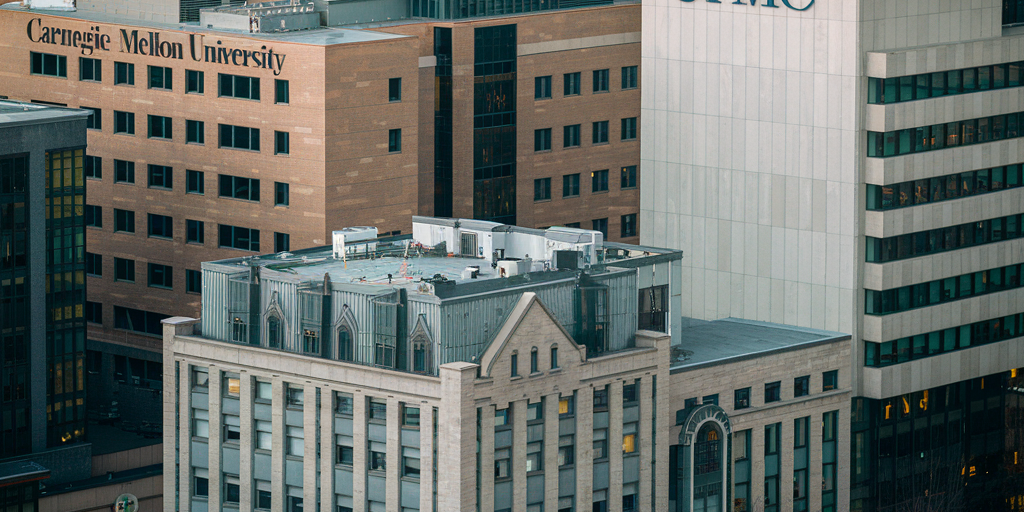Oakland is often called the intellectual heart of Pittsburgh, home to world-renowned universities, cutting-edge hospitals, and cultural institutions. But it wasn’t always this way. Once a quiet, residential neighborhood on the outskirts of the city, Oakland transformed over the past century into a center of higher learning, medical innovation, and research. From its early days to its modern prominence, here’s how Oakland became Pittsburgh’s education and medical hub.
Early Days: From Farmland to Urban Development
In the early 19th century, Oakland was largely undeveloped, consisting of farmland, rolling hills, and estates owned by Pittsburgh’s wealthy families. It wasn’t until the mid-1800s that the area began to urbanize, driven by the expansion of Pittsburgh’s streetcar system and the city’s growing population. The neighborhood’s proximity to Downtown made it an attractive location for both residential and institutional development.
One of the earliest institutions to take root in Oakland was Allegheny County’s first public park, Schenley Park, which was established in 1889. This vast green space became a recreational retreat for the city’s residents and laid the foundation for future developments in the area.
The Rise of Education: The Birth of the University District
The biggest catalyst in Oakland’s transformation came with the arrival of higher education institutions. In 1909, the University of Pittsburgh moved from its original location in Allegheny City (now the North Side) to Oakland, marking the beginning of its ascent as a major research university. The move coincided with the construction of the iconic Cathedral of Learning, which became one of the defining symbols of both the university and the neighborhood.
Just a few years later, Carnegie Technical Schools (founded by industrialist Andrew Carnegie in 1900) expanded its presence in Oakland. By 1912, it had evolved into Carnegie Institute of Technology, eventually merging with the Mellon Institute in 1967 to form Carnegie Mellon University (CMU). The presence of two prestigious universities in such close proximity cemented Oakland’s status as an education hub.
The Rise of Medicine: The Birth of “Pittsburgh’s Medical Mile”
As education institutions flourished, Oakland also became a center for medical innovation. The University of Pittsburgh Medical Center (UPMC) traces its roots back to 1893, when the Western Pennsylvania Medical College merged with Pitt’s School of Medicine. By the mid-20th century, UPMC had expanded into a leading medical research institution, specializing in transplants, cancer treatment, and neuroscience.
One of the most significant breakthroughs in medical history occurred in Oakland in 1955, when Dr. Jonas Salk developed the first effective polio vaccine at the University of Pittsburgh. This landmark discovery put Pittsburgh on the global map as a leader in medical research and public health.
Today, UPMC operates some of the most advanced hospitals in the world, including UPMC Presbyterian, UPMC Magee-Womens Hospital, and UPMC Montefiore, all located in Oakland. These institutions attract top-tier doctors, researchers, and students, further solidifying the neighborhood’s reputation as a hub for healthcare excellence.
Cultural & Technological Growth
Oakland isn’t just about medicine and education—it’s also home to some of Pittsburgh’s most cherished cultural institutions. The Carnegie Museums of Pittsburgh, including the Carnegie Museum of Natural History and Carnegie Museum of Art, were established in 1895 and remain key landmarks in the neighborhood. The Carnegie Library of Pittsburgh, also founded by Andrew Carnegie, continues to serve as a major resource for students and researchers.
Oakland has also embraced technological innovation, with Carnegie Mellon University leading the way in robotics, artificial intelligence, and engineering research. CMU’s Robotics Institute, founded in 1979, has positioned Pittsburgh as a leader in autonomous vehicle development and AI-driven healthcare.
Modern-Day Oakland: A Hub for the Future
Today, Oakland is a bustling, ever-evolving neighborhood where education, medicine, and innovation converge. It is home to more than 100,000 students, world-class hospitals, and groundbreaking research institutions. With ongoing developments like the Innovation District, Oakland continues to be at the forefront of technological and medical advancements.
As Pittsburgh looks to the future, Oakland remains a cornerstone of the city’s identity—a neighborhood where history, learning, and progress intersect to shape the next generation of leaders, doctors, and innovators.









